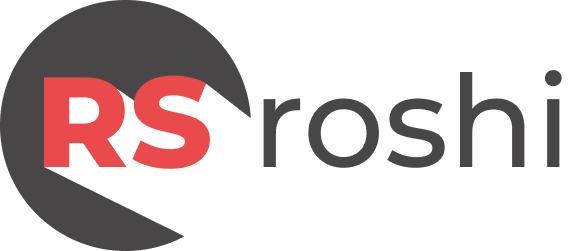As Software-as-a-Service (SaaS) applications continue to dominate the market, the need for efficient multi-tenant architectures has become paramount. Laravel, with its robust ecosystem and elegant syntax, provides an excellent foundation for building permission-based multi-tenant SaaS applications. This comprehensive guide explores how to architect, implement, and optimize multi-tenant SaaS solutions that can serve multiple clients while maintaining data isolation and granular access control.
Understanding Multi-Tenancy in SaaS Applications
Multi-tenancy is an architectural pattern where a single instance of software serves multiple tenants or customers. In a permission-based multi-tenant SaaS in Laravel, each tenant operates in isolation while sharing the same application infrastructure. This approach offers significant cost savings, simplified maintenance, and efficient resource utilization compared to single-tenant deployments.
Laravel’s architecture naturally supports multi-tenancy through its service container, middleware system, and Eloquent ORM capabilities. The framework’s flexibility allows developers to implement various multi-tenancy strategies while maintaining clean, maintainable code.
Key Components of Permission-Based Multi-Tenant Architecture
Database Architecture Strategies
When building a permission-based multi-tenant SaaS in Laravel, choosing the right database architecture is crucial. Three primary approaches exist:
Single Database with Tenant ID: This approach adds a tenant identifier column to each table. Laravel’s global scopes automatically filter queries based on the current tenant context. This method offers the best resource utilization but requires careful implementation to prevent data leakage.
Database Per Tenant: Each tenant gets a dedicated database, providing maximum isolation. Laravel’s database configuration system makes switching between tenant databases straightforward through dynamic connections.
Schema Per Tenant: A hybrid approach where tenants share a database but have separate schemas. This balances isolation with resource efficiency.
For most permission-based multi-tenant SaaS applications in Laravel, the single database approach with proper scoping provides optimal performance and cost-effectiveness.
Implementing Tenant Detection and Context
Laravel middleware provides an elegant solution for tenant detection and context establishment. Here’s how to implement tenant resolution:
class TenantMiddleware
{
public function handle($request, Closure $next)
{
$tenant = $this->resolveTenant($request);
if (!$tenant) {
abort(404, 'Tenant not found');
}
app()->instance('tenant', $tenant);
config(['database.connections.tenant.database' => $tenant->database]);
return $next($request);
}
}
This middleware automatically resolves the current tenant context for each request, ensuring proper data isolation throughout the application lifecycle.
Role-Based Access Control Integration
Permission-based multi-tenant SaaS in Laravel requires sophisticated access control mechanisms. Laravel’s authorization system, combined with packages like Spatie Permission, provides robust role and permission management:
class User extends Authenticatable
{
use HasRoles;
public function hasPermissionInTenant($permission, $tenant)
{
return $this->hasPermissionTo($permission) &&
$this->tenants()->where('id', $tenant->id)->exists();
}
}
This approach ensures users can only access resources within their authorized tenants while respecting their assigned permissions.
Laravel Packages and Tools for Multi-Tenancy
Several excellent packages streamline multi-tenant SaaS development in Laravel:
Tenancy for Laravel (Archtechx/Tenancy)
This comprehensive package handles tenant identification, database switching, and resource isolation automatically. It supports multiple identification methods including domain-based, subdomain-based, and path-based tenancy.
Laravel Tenant
A lightweight alternative focusing on simplicity and performance. It provides essential multi-tenancy features without excessive complexity, making it ideal for permission-based multi-tenant SaaS applications that require custom implementations.
Spatie Laravel Multitenancy
Developed by the renowned Spatie team, this package offers a clean API for multi-tenant applications with excellent documentation and community support.
Implementation Best Practices
Data Isolation and Security
Security is paramount in permission-based multi-tenant SaaS applications. Laravel’s global scopes provide automatic query filtering:
class TenantScope implements Scope
{
public function apply(Builder $builder, Model $model)
{
if (app()->bound('tenant')) {
$builder->where('tenant_id', app('tenant')->id);
}
}
}
This ensures all database queries automatically include tenant filtering, preventing accidental cross-tenant data access.
Performance Optimization
Multi-tenant applications face unique performance challenges. Implement these optimizations:
Database Indexing: Create composite indexes on tenant_id columns to optimize filtered queries.
Caching Strategies: Use tenant-aware caching keys to prevent cache pollution between tenants.
Queue Management: Implement tenant-aware job processing to maintain context during background operations.
Scalability Considerations
Permission-based multi-tenant SaaS in Laravel must scale efficiently. Consider these architectural decisions:
Horizontal Scaling: Design database schemas to support sharding across multiple servers as tenant count grows.
Resource Isolation: Implement tenant-based resource limits to prevent one tenant from affecting others’ performance.
Microservices Integration: Laravel’s service container and event system facilitate migration to microservices architecture when needed.
Real-World Implementation Challenges
Cross-Tenant Features
Some SaaS features require cross-tenant functionality, such as shared marketplaces or collaboration tools. Handle these scenarios carefully:
class MarketplaceService
{
public function getSharedProducts()
{
return Product::withoutGlobalScope(TenantScope::class)
->where('is_shared', true)
->get();
}
}
User Management Complexity
Users may belong to multiple tenants with different roles. Design flexible user-tenant relationships:
class UserTenant extends Model
{
public function user()
{
return $this->belongsTo(User::class);
}
public function tenant()
{
return $this->belongsTo(Tenant::class);
}
public function roles()
{
return $this->belongsToMany(Role::class);
}
}
Testing Multi-Tenant Applications
Testing permission-based multi-tenant SaaS in Laravel requires special considerations:
class TenantTestCase extends TestCase
{
protected function setUp(): void
{
parent::setUp();
$this->tenant = Tenant::factory()->create();
$this->app->instance('tenant', $this->tenant);
}
public function test_tenant_isolation()
{
$user1 = User::factory()->for($this->tenant)->create();
$user2 = User::factory()->for(Tenant::factory())->create();
$this->assertCount(1, User::all());
}
}
Deployment and Maintenance
Deploying multi-tenant applications requires careful planning:
Migration Management: Use tenant-aware migrations to update all tenant databases consistently.
Monitoring: Implement tenant-specific monitoring to identify performance issues and resource usage patterns.
Backup Strategies: Design backup procedures that account for tenant data isolation requirements.
Conclusion
Building a permission-based multi-tenant SaaS in Laravel offers tremendous opportunities for creating scalable, efficient applications that serve multiple customers from a single codebase. Laravel’s robust architecture, combined with proper planning and implementation of multi-tenancy patterns, enables developers to create sophisticated SaaS solutions that maintain security, performance, and maintainability.
Success in multi-tenant SaaS development requires careful attention to data isolation, performance optimization, and scalable architecture design. By leveraging Laravel’s ecosystem and following established best practices, developers can build world-class multi-tenant applications that grow with their business needs.
The future of SaaS lies in efficient multi-tenant architectures, and Laravel provides the tools and flexibility needed to implement these solutions effectively. Whether you’re building a CRM, project management tool, or industry-specific application, permission-based multi-tenant SaaS in Laravel offers a path to scalable, profitable software solutions.
Read also:
Understanding Traits in Laravel: Reuse Code Efficiently Across Your Application
Utilizing AI-Powered Coding Tools For Transforming Software Development





